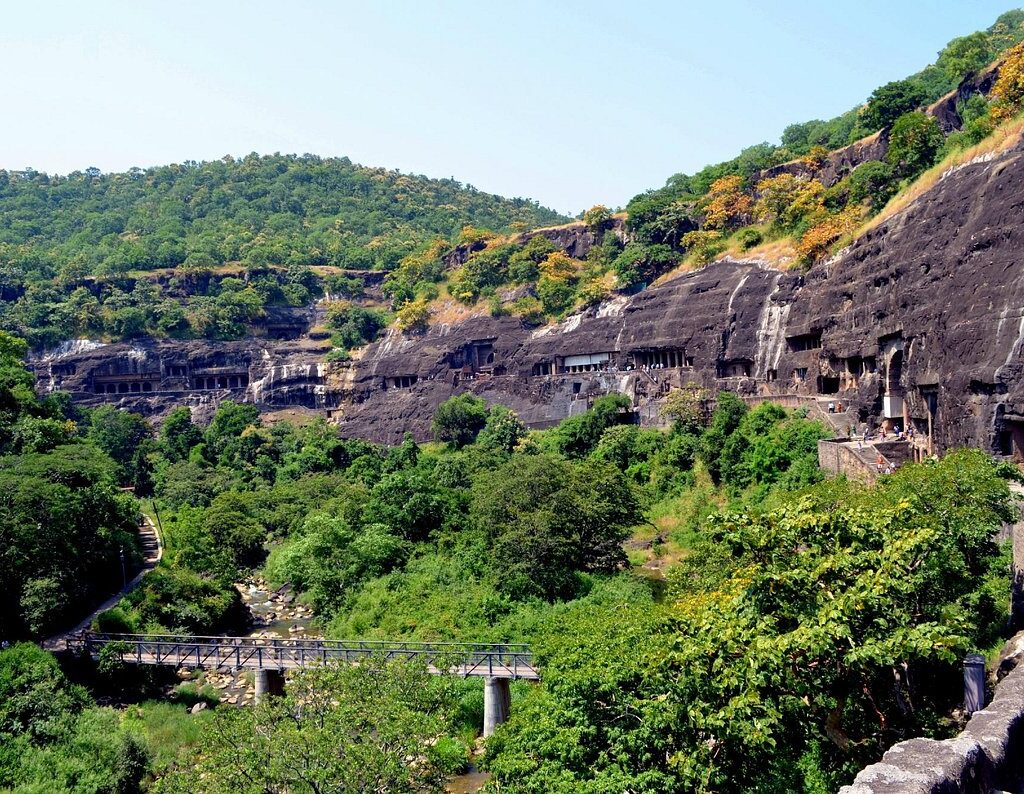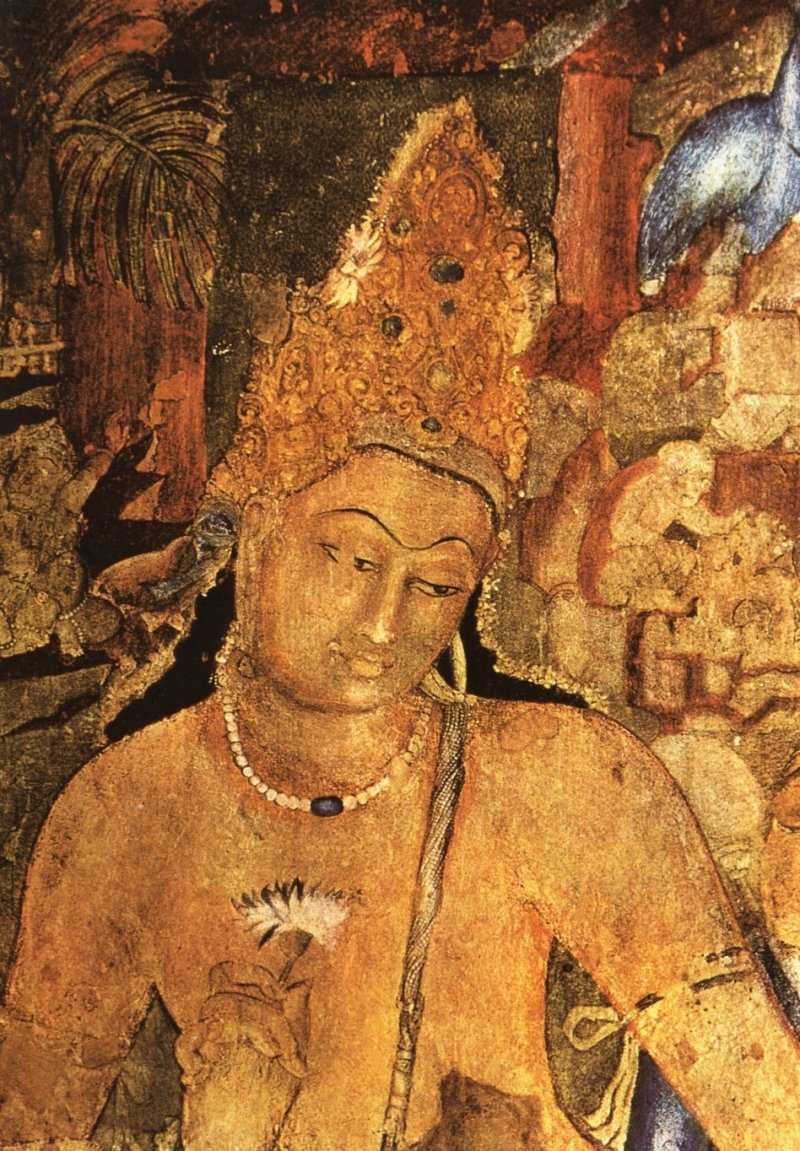
Ajanta Art:
Introduction:
Ajanta Caves, a UNESCO World Heritage site located in Maharashtra, India, is an extraordinary testament to ancient Indian art and craftsmanship. The caves, excavated from the 2nd century BCE to the 6th century CE, showcase magnificent Buddhist paintings and sculptures. This article delves into the origin and discovery of Ajanta, its geographical situation, the importance of its art style, and explores the artistic aspects of its significant caves.
Origin and Discovery:
The Ajanta Caves lay hidden and forgotten for centuries until their rediscovery in 1819. A British officer named John Smith accidentally stumbled upon them while on a hunting expedition. The caves, carved into a horseshoe-shaped cliff along the Waghora River, reveal a magnificent art gallery that offers invaluable insights into ancient Indian culture, religion, and artistic prowess.
Geographical Situation:
Ajanta is situated in the Sahyadri mountain range of the Deccan plateau. The caves are nestled amidst lush green surroundings, providing a serene and spiritual ambiance for artistic expression. The proximity to the river not only served as a source of water for the artists but also influenced the preservation of the paintings by maintaining a stable humidity level.
Importance of Art Style:
The art style found in the Ajanta Caves is a unique amalgamation of Indian and foreign influences. It represents the culmination of centuries of artistic development in ancient India. The paintings and sculptures showcase a remarkable blend of realism, spirituality, and storytelling. Ajanta art played a crucial role in the development of subsequent art styles in India, influencing various regional schools of painting and sculpture.
Artistic Aspects and Important Caves:
- Painting Style: The Ajanta paintings are predominantly executed in the fresco technique, where pigments are applied to wet plaster. The vibrant colors, delicate detailing, and intricate brushwork make these paintings truly captivating. The artists skillfully employed shading and perspective to create a three-dimensional effect.
- Sculptural Excellence: The Ajanta sculptures exemplify the mastery of ancient Indian sculptors. The sculptures, carved out of rock, depict various scenes from the life of the Buddha, Jataka tales, celestial beings, and bodhisattvas. The intricate carvings and the subtle expressions on the figures reflect the artists’ deep understanding of human anatomy and spiritual symbolism.
- Cave 1: The most significant cave in Ajanta is Cave 1, also known as the Mahachaitya. It houses a grand stupa and a colossal Buddha statue, surrounded by intricately carved pillars and ornate motifs. The walls of this cave are adorned with captivating paintings depicting scenes from the life of the Buddha and various Buddhist divinities.
- Cave 16: Another notable cave is Cave 16, popularly known as the Kailasa Temple. It is the largest monolithic structure in the world and showcases intricate carvings, including a depiction of Mount Kailash, the abode of Lord Shiva. The cave is a masterpiece of rock-cut architecture, testifying to the immense skill of ancient Indian craftsmen.
- Cave 26: Cave 26 is famous for its depiction of the “Prince in Dying Condition,” a poignant portrayal of a prince contemplating mortality and renouncing worldly life. The delicate brushwork and emotional depth in this painting highlight the artistic sensitivity of Ajanta artists.
The technique of Ajanta frescoes and murals
Ajanta frescoes were done in tempera style .frescoes are paintings which are done on wet plaster in which colours become fixed as the plaster dries and is directly done on the walls and ceilings of Ajanta caves. Ajanta murals are well-sized paintings done on any surface but fixed on a wall.
Colours of Ajanta
Ajanta artist used only limited colours which were prepared from locally available pigment; natural white colours were prepared from lime or chalkstone, blue from Neel (indigo) trees yellow from Pevady, red from red ruddle, yellow colour from arsenic. Rest all the colours used in Ajanta paintings were a mixture of red, blue, yellow and white. the black colour was made from burning the mustard in the oil lamp.
The subject matter of Ajanta painting
We find different aspects of life painted in Ajanta caves. The lonely life of the village, luxury life of cities, beggars, fishermen, fighting soldiers, hunters, bullfight, birds and animals etc. are the specialities of Ajanta paintings. The whole religious and philosophical life has been depicted in the background of these figures. Also, themes of court life, feasting processions, men and women at work, festivals, various natural scenes including animals, birds and flowers have been depicted.
The artist use shading to give a 3D effect. Similarly, at Bagh caves,150km away to the north of Ajanta, beautiful frescoes have been found. though the themes in these paintings are both secular and religious they do depict some aspects of Buddhist life and rituals. One of the most famous paintings shows a procession of elephants. another depicts a dancer and women musicians. these have been influenced by the Ajanta style of paintings.
According to the scholars, the paintings of Ajanta can be divided into three parts as regards the subject matter.
They are: – (1) ornamental (2) emotional or expressive (3) descriptive
The first category includes animals, birds, flowers, creepers, giants, divine people, snakes, Gandharva, Apsaras, garuda and yaksha
Buddha and Bodhisattva, king and queen, Buddha in a different pose, his birth, death and divine events of his life come under the second category.
The third category consists of jataka stories which are maximum in number.
Characteristics of Ajanta painting
1. LINEAR BEAUTY: The line drawing has added great charm to Ajanta paintings and there’s a beautiful expression of emotion through line art. The pressure of the brushes creates the desired effect and adds additional charm to the paintings. the lines are powerful, flexible thick and thin according to the requirement. the shades of lines are different varying from red to dark brown and then black.
2. EXPRESSION OF SENTIMENTS: The expression of emotion and thoughts is the soul of Ajanta paintings. composition gaiety, friendship, worship, request and restlessness have been beautifully depicted. human emotions like love, shyness, sorrow, fear, courage, anger, hate, strain and beauty have been very successfully depicted in the Ajanta art.
3. DEPICTION OF WOMEN: Women symbolizes beauty and the Ajanta artist have made them look graceful, polite and divine also as the goddess of art, mostly women are painted half nude but there is no vulgarity.
4. DECORATION ON PROOF: The roofs of Ajanta caves are also very beautifully decorated. animals, birds lotus, gods and goddesses have been used in lovely decoration. the speciality in this decoration is that in spite of the limited means available in the dark caves and working in dim lights the artist didn’t compromise with the quality of work.
5. COLOR SCHEME: -The use of limited colours in creating a different colour scheme is the originality of Ajanta paintings, and moreover the retention of brightness in colour for about 2000 years is another great feature .he whole painting has been done by Gerua (ruddle ), Neel ( blue colour), chalk and lime for white colour and paved yellow ruddle for yellow colour.
6. TYPES OF LIFE: Divine and common, both the lives have been beautifully depicted in Ajanta art .royal and rural, both scenes have been painted well.
Conclusion:
The Ajanta Caves stand as a remarkable testament to the artistic genius of ancient India. The paintings and sculptures found within these caves not only demonstrate exceptional skill and craftsmanship but also provide invaluable insights into the religious and cultural milieu of ancient times. The artistic legacy of Ajanta continues to inspire and fascinate art enthusiasts, serving as a gateway to the rich artistic heritage of India
.
